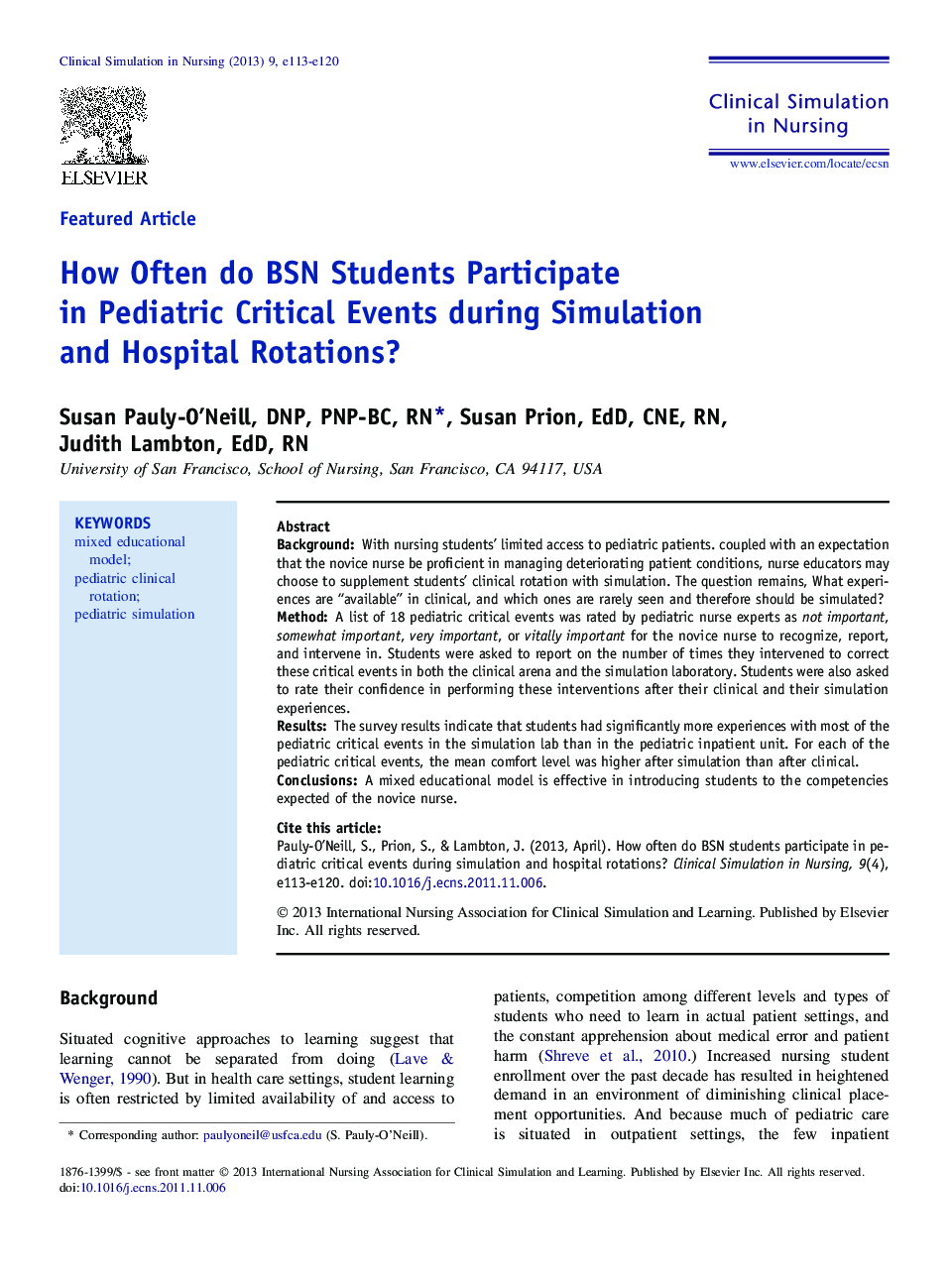| Article ID | Journal | Published Year | Pages | File Type |
|---|---|---|---|---|
| 2645723 | Clinical Simulation in Nursing | 2013 | 8 Pages |
BackgroundWith nursing students’ limited access to pediatric patients. coupled with an expectation that the novice nurse be proficient in managing deteriorating patient conditions, nurse educators may choose to supplement students’ clinical rotation with simulation. The question remains, What experiences are “available” in clinical, and which ones are rarely seen and therefore should be simulated?MethodA list of 18 pediatric critical events was rated by pediatric nurse experts as not important, somewhat important, very important, or vitally important for the novice nurse to recognize, report, and intervene in. Students were asked to report on the number of times they intervened to correct these critical events in both the clinical arena and the simulation laboratory. Students were also asked to rate their confidence in performing these interventions after their clinical and their simulation experiences.ResultsThe survey results indicate that students had significantly more experiences with most of the pediatric critical events in the simulation lab than in the pediatric inpatient unit. For each of the pediatric critical events, the mean comfort level was higher after simulation than after clinical.ConclusionsA mixed educational model is effective in introducing students to the competencies expected of the novice nurse.
